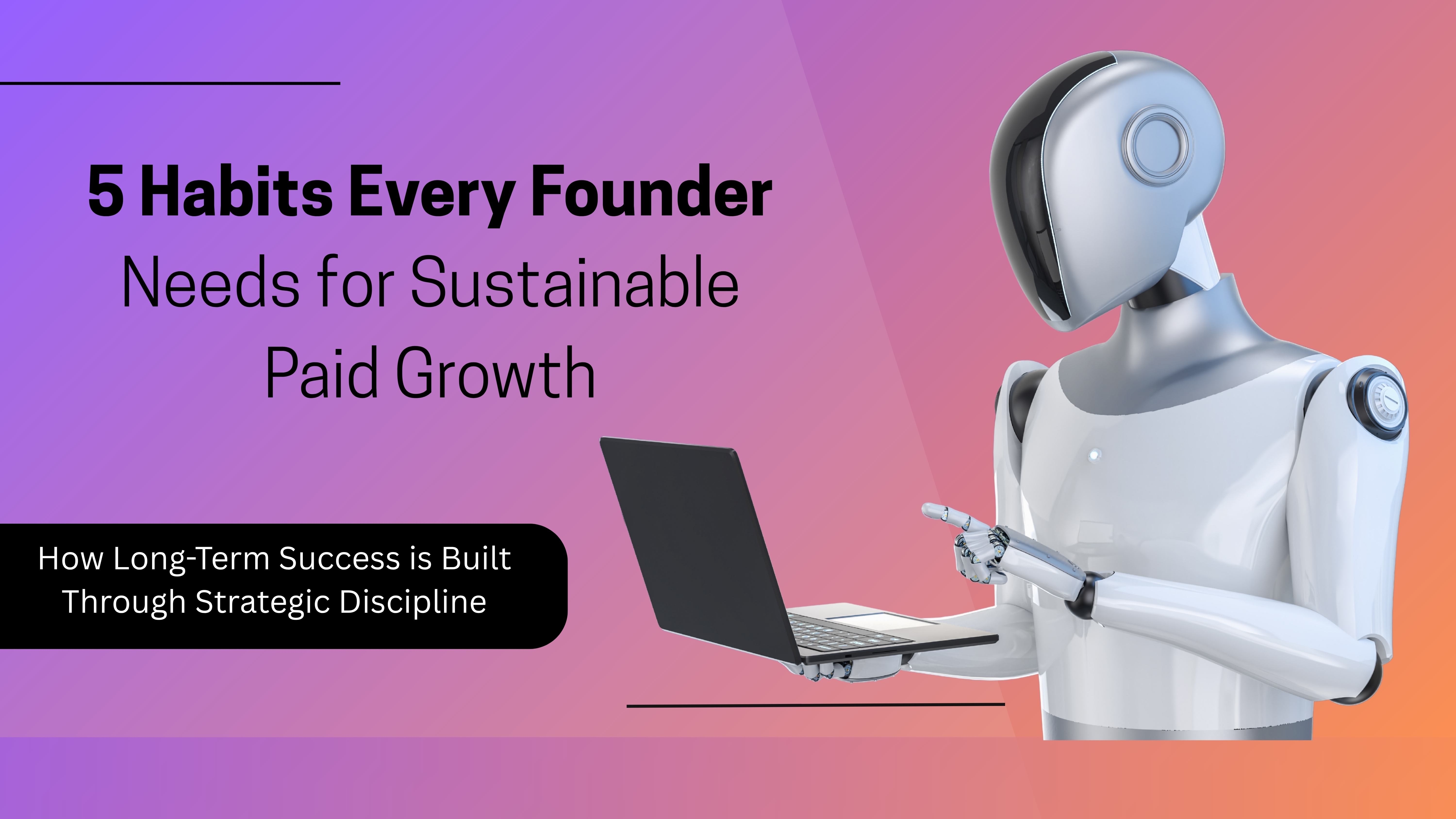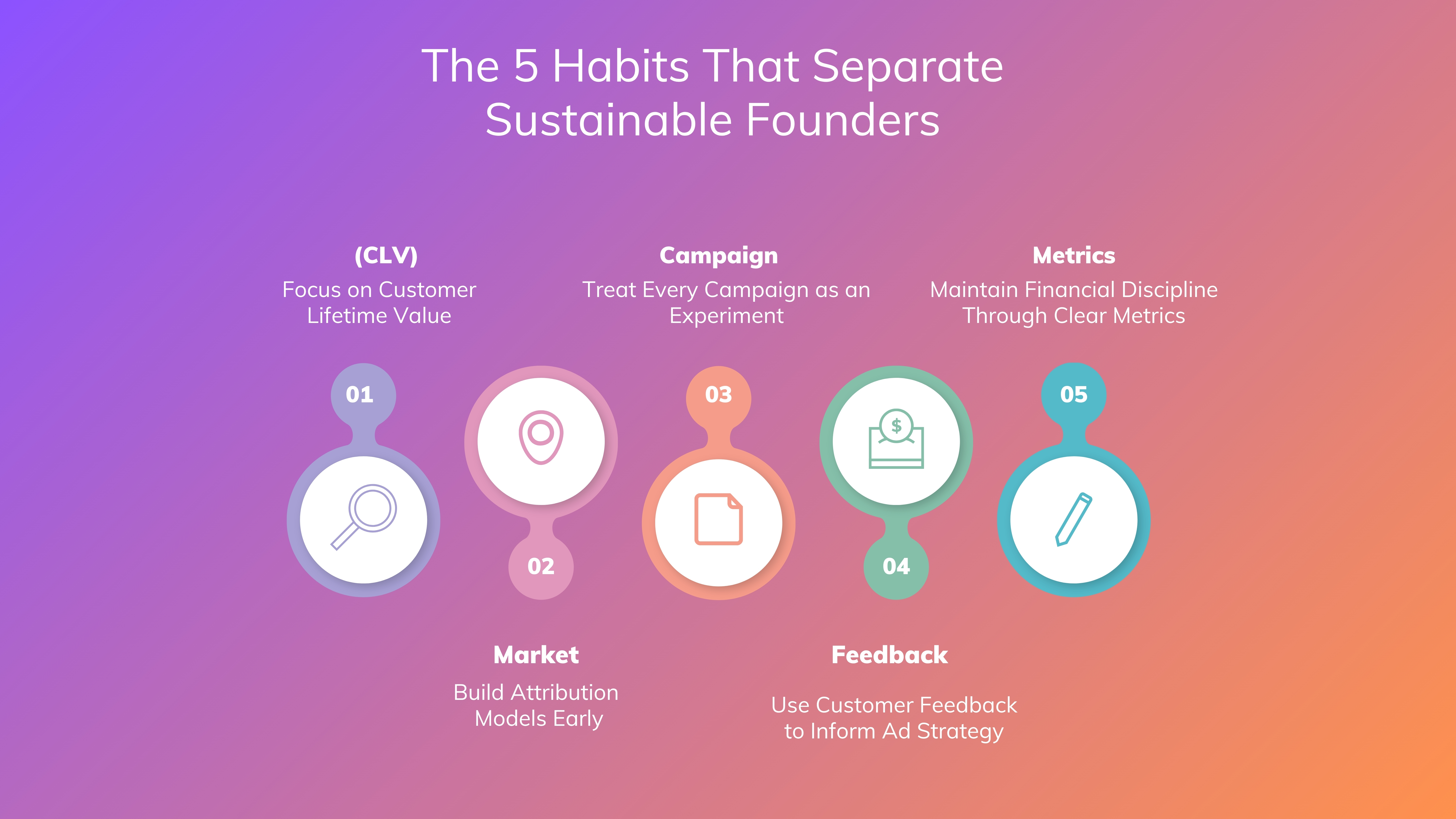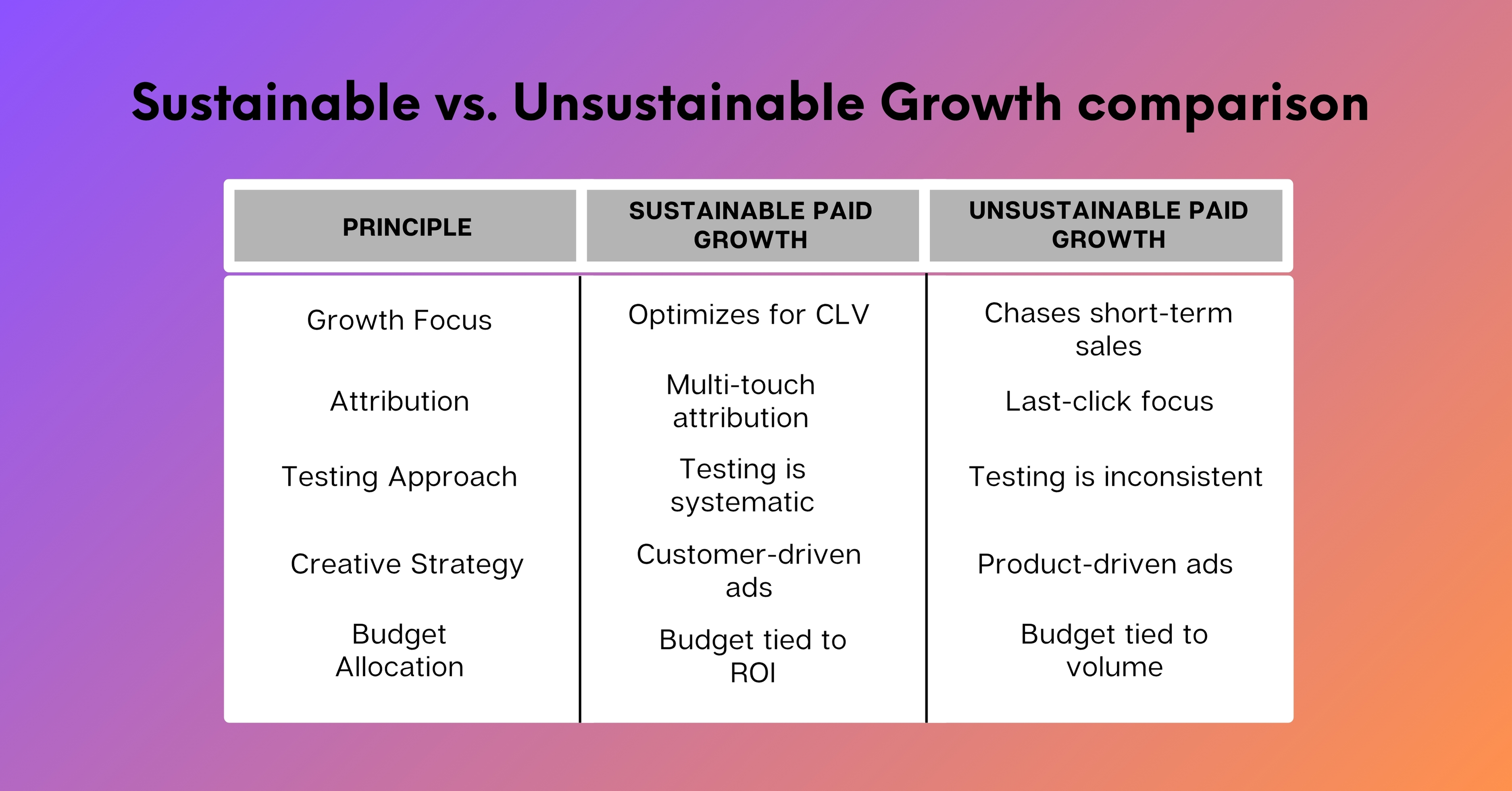5 Founder Habits That Make Paid Growth Sustainable: How Long-Term Success is Built Through Strategic Discipline

In today’s digital landscape, sustainable paid growth is not driven by quick wins or one-off campaigns. It stems from disciplined founder habits that transform paid marketing into a long-term growth engine. While many startups burn through ad budgets chasing short-term metrics, successful founders cultivate systems—now enhanced by AI-powered advertising—that build competitive advantages over time.
What Makes Paid Growth Truly Sustainable?
Sustainable paid growth habits are repeatable systems that generate consistent returns and support long-term business goals. These habits reflect a commitment to customer lifetime value, data-informed decisions, and a testing culture that compounds insights over time.
Unlike traditional performance marketing that focuses on immediate conversions, sustainable paid growth prioritizes long-term impact, integrated strategy, and organizational learning. Founders who follow these practices—and use AI ad automation to reduce friction—create momentum that is both predictable and defensible.
The 5 Habits That Separate Sustainable Founders
This visual captures the core habits that set sustainable founders apart—each one reinforcing long-term paid growth through strategy, discipline, and continuous learning.

1. Focus on Customer Lifetime Value (CLV)
Founders with a sustainable mindset prioritize CLV over short-term acquisition costs. Instead of optimizing purely for CPA, they calculate how much revenue each customer brings over time and adjust their strategies accordingly.
AI-powered ad platforms help model CLV more precisely and automatically segment high-value users—making it easier to align budget with long-term returns.
They allocate budgets based on CLV-to-CAC ratios and refine targeting to attract customers who are likely to return, refer, or expand. This long-term view justifies higher upfront costs for more valuable, loyal customers.
2. Build Attribution Models Early
Sustainable growth requires understanding the full customer journey. Relying on last-click attribution distorts results and can lead to misallocated spend. Founders committed to sustainability adopt multi-touch attribution that considers every touchpoint—email, content, social, paid, and organic.
AI-driven attribution tools analyze these journeys in real-time, weighing influence across channels and updating insights dynamically—no manual setup required.
These attribution models are not set-and-forget. They are revisited regularly, audited for accuracy, and integrated across both paid and organic strategies to ensure better decisions and tighter alignment.
3. Treat Every Campaign as an Experiment
Founders who treat paid campaigns as experiments rather than bets tend to outperform over time. Each campaign is framed with a hypothesis, tested systematically, and evaluated for insights.
AI ad automation enables rapid A/B testing, self-optimizing campaigns, and insight reports that surface winning patterns faster than manual methods.
Over time, this creates a learning database—what worked, what didn’t, and why—that reduces future waste. The outcome is faster optimization, lower acquisition costs, and campaigns that evolve with market conditions.
4. Use Customer Feedback to Inform Ad Strategy
A key habit is connecting customer insight with campaign execution. Instead of relying solely on ad performance data, sustainable founders integrate customer interviews, support tickets, and usage data into their creative and targeting.
AI-powered tools can translate customer feedback into data-driven personas and auto-generate ad copy that resonates with those segments.
This feedback loop ensures messaging stays aligned with customer needs and pain points. As customers evolve, so do the ads—making them more relevant, more resonant, and more effective.
5. Maintain Financial Discipline Through Clear Metrics
Even with creativity and experimentation, sustainable founders maintain strict financial oversight. They track unit economics, enforce payback period thresholds, and integrate cash flow planning with marketing execution.
AI tools can monitor financial performance in real time, flag anomalies, and recommend budget shifts that keep growth efficient.
This prevents the trap of scaling unprofitable campaigns for vanity metrics. Sustainable growth is not just about how fast you grow—it is about how efficiently you grow.
Sustainable vs. Unsustainable Growth: A Quick Comparison
The contrast below highlights how disciplined habits—often supported by AI—lead to sustainable growth, while reactive tactics often result in fragile, short-lived gains:

Why These Habits Matter: Benefits Over Time
In the First 6 Months
You will likely see improved campaign performance, better targeting, lower acquisition costs, and stronger conversion rates. With clearer financial controls, budget efficiency increases, and customer insights start to sharpen creative and product direction.
Over 6–18 Months
Campaign performance becomes more predictable, making growth planning and fundraising easier. You begin to build competitive advantages through deeper attribution insights and scalable internal processes. Testing frameworks speed up decision-making while reducing risk.
Beyond 18 Months
Companies that commit to these habits often achieve market leadership. Investors reward consistent, efficient growth with higher valuation multiples. Just as importantly, the organization becomes adaptive—a culture of testing, learning, and improving takes root across teams.
Frequently Asked Questions (FAQs)
How soon do results appear?
Most founders see positive changes in 4–8 weeks. Within 3–6 months, returns on ad spend improve significantly. The full compounding effects take 12–18 months to materialize.
What budget is needed to start?
Even $5K/month is enough to implement basic versions of these habits. At $25K/month and above, more advanced attribution tools and testing velocity become viable.
Do these habits differ between B2B and B2C?
Yes. B2B companies tend to need longer attribution models and more refined lead scoring, while B2C benefits from faster testing cycles and sharper CLV focus. The underlying principles, however, remain the same.
Can non-technical founders implement this?
Absolutely. These habits are more about strategic discipline than technical skill. With support from AI-powered ad tools, agencies, or no-code platforms, non-technical founders can implement them successfully.
What are common mistakes?
Trying to adopt all habits at once, chasing surface-level metrics, or abandoning the strategy too early. Sustainable growth requires patience, focus, and incremental progress.
How does this align with organic growth?
These paid habits complement organic efforts. Attribution models unify cross-channel performance, feedback loops enhance content marketing, and testing frameworks can be used in SEO or social strategies too.